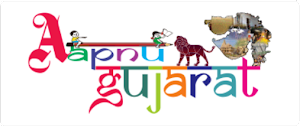Parmanent Account Number Related News
Permanent Account Number (PAN) is a code that acts as an identification for individuals, families and corporates (Indian and Foreign as well), especially those who pay Income Tax.is a unique, 10-character alpha-numeric identifier, issued to all judicial entities identifiable under the Indian Income Tax Act, 1961. The Income Tax PAN code and its linked card are issued under Section 139A of the Income Tax Act. It is issued by the Indian Income Tax Department under the supervision of the Central Board for Direct Taxes (CBDT) and it also serves as an important proof of identification.[1]It is also issued to foreign nationals (such as investors) subject to a valid visa , and hence that PAN is not acceptable as a proof of Indian citizenship.[2]
The PAN is mandatory for a majority of financial transactions such as opening a bank account, receiving taxable salary or professional fees, sale or purchase of assets above specified limits etc.; especially high-value transactions.
The primary purpose of the PAN is to bring a universal identification to all financial transactions and to prevent tax evasion by keeping track of monetary transactions, especially those of high-net-worth individuals who can impact the economy.
The PAN is unique to each individual and is valid for the lifetime of the holder, throughout India. Since a PAN is linked to an individual, a point worth to mention is that the PAN code is therefore not affected by any change of address.
The Media in Gujarati language started with publication of Bombay Samachar in 1822. Initially the newspapers published business news and they were owned by Parsi people based in Bombay. Later Gujarati newspapers started published from other parts of Gujarat. Several periodicals devoted to social reforms were published in the second half of the 19th century. After arrival of Mahatma Gandhi, the Indian independence movement peaked and it resulted in proliferation of Gujarati media. Following independence, the media was chiefly focused on political news. After bifurcation of Bombay state, the area of service changed. Later there was an increase in readership due to growth of literacy and the media houses expanded its readership by publishing more number of editions. Later these media houses ventured into digital media also. The radio and television media expanded after 1990.
A newspaper is a serial publication containing news about current events, other informative articles about politics, sports, arts, and so on, and advertising. A newspaper is usually, but not exclusively, printed on relatively inexpensive, low-grade paper such as newsprint. The journalism organizations that publish newspapers are themselves often metonymically called newspapers.
Newspapers developed in the 17th century, as information sheets for businessmen. By the early 19th century, many cities in Europe, as well as North and South America, published newspapers. As of 2017, most newspapers are now published online as well as in print. The online versions are called online newspapers or news websites.
A wide variety of material is published in newspapers, including opinion columns, weather forecasts, reviews of local services, obituaries, birth notices, crosswords, editorial cartoons, comic strips, and advice columns. Most newspapers are businesses, and they pay their expenses with a mixture of subscription revenue, newsstand sales, and advertising revenue.
News is information about current events. This may be provided through many different media: word of mouth, printing, postal systems, broadcasting, electronic communication, or through the testimony of observers and witnesses to events. It is also used as a platform to manufacture opinion for the population see propaganda.
Common topics for news reports include war, government, politics, education, health, the environment, economy, business, fashion, and entertainment, as well as athletic events, quirky or unusual events. Government proclamations, concerning royal ceremonies, laws, taxes, public health, and criminals, have been dubbed news since ancient times. Humans exhibit a nearly universal desire to learn and share news, which they satisfy by talking to each other and sharing information.
News can travel through different communication media.[17] In modern times, printed news had to be phoned into a newsroom or brought there by a reporter, where it was typed and either transmitted over wire services or edited and manually set in type along with other news stories for a specific edition. Today, the term "breaking news" has become trite as commercial broadcasting United States cable news services that are available 24 hours a day use live communications satellite technology to bring current events into consumers' homes as the event occurs. Events that used to take hours or days to become common knowledge in towns or in nations are fed instantaneously to consumers via radio, television, mobile phone, and the internet.
Speed of news transmission, of course, still varies wildly on the basis of where and how one lives.[172]
Technological and social developments, often driven by government communication and espionage networks, have increased the speed with which news can spread, as well as influenced its content. The genre of news as we know it today is closely associated with the newspaper, which originated in China as a court bulletin and spread, with paper and
source :- news18
Read for news report
Tags:
News
